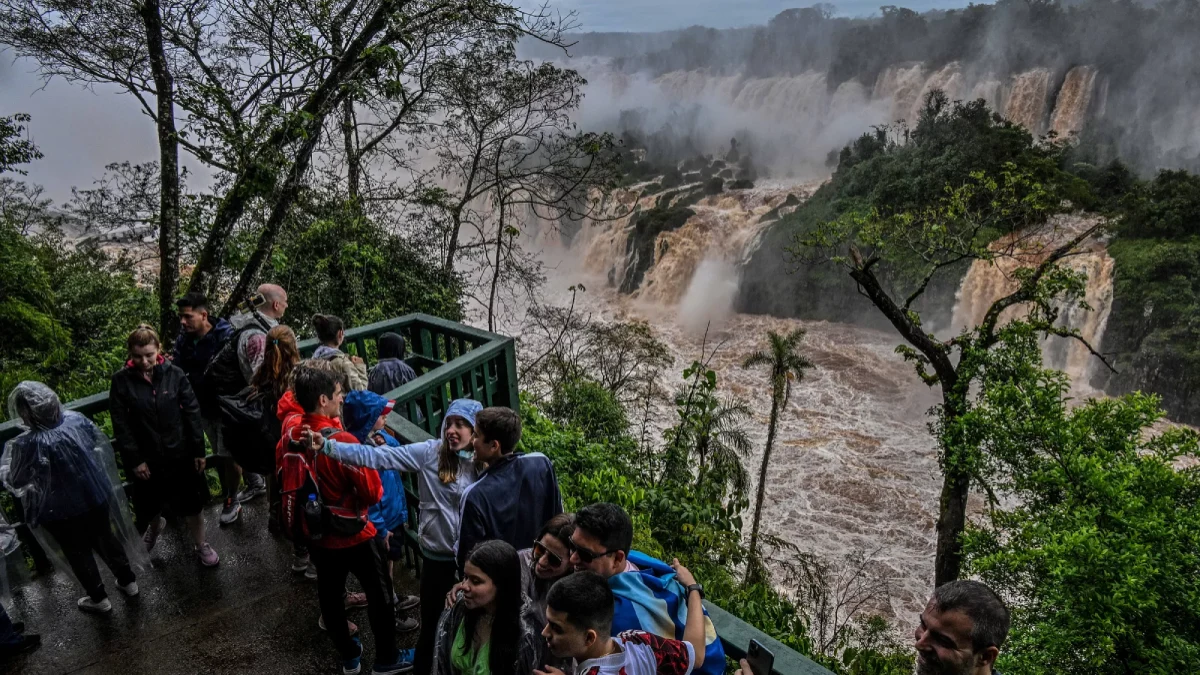Iguazu Falls Border Crossing and Visa Requirements
Border checks, visa rules, and travel tips

Visiting Iguazú Falls is special because you can experience it from two countries – Argentina and Brazil.
If you plan to explore both sides of the falls, it’s essential to understand the border crossing procedures and visa requirements for each country.
The border crossing may sound tricky, but don’t worry — it’s very straightforward once you know the process.
This guide covers border crossing between Argentina and Brazil, including visa, necessary travel tips, and everything you need for a smooth visit.
Choose between the Argentina side or Brazil side tours, or experience both in a full-day tour. For an extra thrill, add a Macuco Safari or Gran Aventura boat ride, or take a helicopter tour for breathtaking aerial views.
Iguazú Falls border crossing between Argentina and Brazil
To cross between Argentina (Puerto Iguazú) and Brazil (Foz do Iguaçu), you need:
- A valid passport (make sure it’s not expiring soon).
- Visa (if required) – check your nationality, as some countries need a visa for Brazil, Argentina, or both.
- Entry stamp – immigration officers on both sides usually stamp your passport.
Tip: Day tours arrange a quick border crossing with a group list, so you may not need to show your passport at the checkpoint. But always carry your passport, just in case.
How to cross the border between Argentina and Brazil Iguazú Falls
The two towns are very close — only 15 km (9 miles) apart. Crossing the border can be done by:
- Taxi: Drivers know the border process and wait while you get stamped.
- Public Bus: Cheaper but slower, as you need to get off for passport checks.
- Guided tours: These tours include border assistance, so you don’t worry about paperwork.
Iguazú Falls border crossing time and customs
- The border crossing usually takes around one hour, depending on the queues.
- Weekends and holidays may be busier.
- Customs checks are generally quick — they may ask about food, alcohol, or electronics.
Tip: Carry some cash in both Argentine pesos and Brazilian reais, since once you cross, card machines don’t always work.
Crossing from Argentina to Brazil for Iguazú Falls
- Start from Puerto Iguazú town or directly from Iguazú National Park (Argentina side).
- Head to the Tancredo Neves International Bridge (the Friendship Bridge of Iguazú).
- At the Brazilian side, you’ll reach Foz do Iguaçu, from where you can head straight to the Brazilian National Park entrance.
The Brazilian side gives you wide panoramic views of the waterfalls — perfect for photos.
Crossing from Brazil to Argentina for Iguazú Falls
- Start from Foz do Iguaçu city or the Iguaçu National Park (Brazilian side).
- Cross the same bridge into Puerto Iguazú.
- Once inside Argentina, you can visit Iguazú National Park, where most of the trails and waterfalls are located.
The Argentine side offers closer, immersive experiences, including the famous Devil’s Throat walkway.
Can you cross the border without a passport at Iguazú Falls?
No. Even if locals sometimes cross with ID cards (Mercosur countries), tourists must always carry their passports. Immigration checks are strict, especially for non-South American travelers.
Visa requirements for Argentina and Brazil
Before visiting Iguazu Falls, it’s important to understand the visa requirements for both Argentina and Brazil, as they vary depending on your nationality and travel plans.
From April 10, 2025, citizens of the United States, Canada, and Australia will need a visa to enter Brazil, even for short tourist stays. Brazil offers an electronic visa (eVisa), which allows stays of up to 90 days with multiple entries.
You can apply online at brazil.vfsevisa.com, submitting your passport, photo, and travel documents.
Approval usually takes about five business days, so it’s recommended to apply at least two weeks before your trip. If you plan to cross into Brazil and return to Argentina, ensure your visa allows multiple entries.
Travelers from the EU and many other countries remain visa-exempt for both Argentina and Brazil, but requirements differ by nationality—so always confirm with your local consulate before traveling.
Crossing both sides: Tips for a smooth experience
- Dual entry: If planning to visit both the Argentine and Brazilian sides of Iguazu Falls, ensure you have the necessary visas for each country.
- Documentation: Always carry your passport and any required visas when crossing borders.
- Health precautions: Some health screenings or vaccination proofs (yellow fever) may be required; check current rules before traveling.
- Transportation: Public buses, taxis, private vehicles, and guided tours are available for crossing.
- Travel time: The crossing process can take approximately 1 to 1.5 hours, depending on traffic and time of day.
- Operating hours: The border is open 24/7; however, services may be limited during late-night hours.
- Stamps: Always keep your entry/exit stamps – you may face problems later if you miss one.
- Local currency: While both countries accept major credit cards, it’s advisable to have some local currency (Argentine Pesos and Brazilian Reais) for small purchases.
